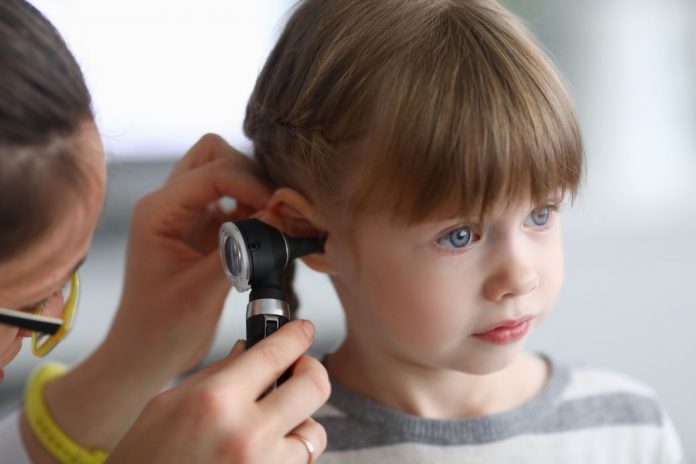Experiencing inner ear discomfort or constant pressure, pus drainage, or hearing loss may be symptoms of an ear infection. You can use over-the-counter (OTC) treatments or consult a doctor if your symptoms don’t improve.
Ear infections can be either bacterial or viral infections. They can occur in your middle ear, the part of your ear just behind your eardrum, as well as the outer and inner ear. They often clear up on their own but can be painful due to inflammation or fluid buildup.
Ear infections can be chronic or acute. Acute ear infections are painful but short in duration. Chronic ear infections either don’t clear up or recur many times. They can cause damage to the middle and inner ear, which is infrequently permanent.
Keep reading to learn about ear infections, including causes, symptoms, and treatment options.
What are the symptoms of ear infections?
Common symptoms of ear infections include:
mild pain or discomfort inside your ear
a persistent feeling of pressure inside your ear
pus-like ear drainage
hearing loss
These symptoms might persist or come and go. Symptoms may occur in one or both ears. Pain is usually more severe with a double ear infection, which is an infection in both ears.
Chronic ear infection symptoms may be less noticeable than those of acute ear infections.
Symptoms of an ear infection in children
Along with symptoms seen in adults, such as ear pain and drainage, young children and babies may show other signs of an ear infection, such as:
rubbing or pulling their ear
fever
not reacting to certain sounds
frequently losing balance
headache
fussiness or restlessness
loss of appetite
Usually, ear infections last fewer than 3 days, but they can persist for up to a week.
Children younger than 6 months who have a fever or other ear infection symptoms should see a doctor. Seek medical attention if your child has a fever higher than 102°F (39°C) or severe ear pain.
What causes an ear infection and what increases your risk?
Ear infections are caused by viruses or bacteria, particularly the bacteria Streptococcus influenzae. They often result from a blockage of your Eustachian tubes, which causes fluid to build up in your middle ear. Eustachian tubes are small tubes that run from each of your ears directly to the back of your throat.
Causes of Eustachian tube blockage include:
allergies
colds
sinus infections
excess mucus
smoking
changes in air pressure
Ear infections can also develop from infected adenoids. Your adenoids are glands on the roof of your mouth behind your nose that help protect your body from infections. Infections can spread from these glands to the nearby ends of your Eustachian tubes.
Risk factors for ear infections
Ear infections occur most commonly in young children because they have short and narrow Eustachian tubes. About 80 percent of children develop an acute ear infection at some point.
Infants who are bottle-fed also have a higher incidence of ear infections than their breastfed counterparts.
Other factors that increase the risk of developing an ear infection are:
altitude changes
changes in temperature and humidity
exposure to cigarette smoke
pacifier use
recent illness or ear infection
being male
low birth weight
lack of access to healthcare
being in daycare
Potential complications of an ear infection
Ear infections usually clear up without intervention, but they may recur. These rare but serious complications may follow an ear infection:
hearing loss
speech or language delay in children, which is more common when there is chronic fluid in the middle ear
mastoiditis (an infection of the mastoid bone in the skull)
meningitis (a bacterial infection of the membranes covering the brain and spinal cord)
ruptured eardrum
How are ear infections treated?
While most mild ear infections clear up without intervention, the following treatments can also help:
Home treatment
These methods are effective in relieving the symptoms of a mild ear infection:
Apply a warm cloth to the affected ear.
Take over-the-counter (OTC) pain medication such as ibuprofen (Advil) or acetaminophen (Tylenol).
Use OTC or prescription ear drops to relieve pain.
Take OTC decongestants like pseudoephedrine (Sudafed).
Avoid sleeping on the affected ear.
Medical treatment
If your symptoms get worse or don’t improve, see a doctor. They may prescribe antibiotics if your ear infection is bacterial, chronic, or doesn’t appear to be improving.
Antibiotics don’t help treat viral infections.
Medical treatment in children
Doctors often take a wait-and-see approach when treating ear infections in children to avoid over-prescribing antibiotics, which can lead to antibiotic resistance.
A doctor may sometimes write you a prescription for antibiotics if symptoms are severe or don’t resolve within 2 to 3 days. Alternatively, they may write you a prescription but recommend waiting first to see if your child’s symptoms get better after 2 to 3 days.
It’s important to finish your entire prescription. Often, a 7- or 10-dayTrusted Source prescription of amoxicillin is prescribed.
You shouldn’t give children aspirin without their doctor’s instruction. Aspirin is a preventable risk factor for developing Reyes’ syndrome, a rare disorder that causes brain and liver damage.
Surgery
Surgery may be an option if your ear infection isn’t eliminated with the usual medical treatments or if you have many ear infections over a short period.
Most often, ear tubes are placed in your ears to allow fluid to drain out. These tubes are surgically inserted into your eardrums. They eventually fall out and the holes heal over. Sometimes these holes need to be closed surgically.
When to see a doctor
The Centers for Disease Control and Prevention recommends seeing a doctor when your child has:
a fever over 102.2°F
pus, discharge, or fluid leaking from your ear
worsening symptoms
symptoms for more than 2 to 3 days
hearing loss
other concerning symptoms
For adults, it’s a good idea to visit a doctor if your symptoms last longer than 2 or 3 days, or you have severe pain or a fever.
How are ear infections diagnosed?
A healthcare professional will consider your symptoms and examine your ears with an instrument called an otoscope that has a light and magnifying lens. The examination may reveal:
redness, air bubbles, or pus-like fluid inside the middle ear
fluid draining from the middle ear
a perforation in the eardrum
a bulging or collapsed eardrum
This exam is rarely painful, but some children may be bothered.
Additional tests
Other tests include:
Fluid sample. If your infection is advanced, your doctor may take a sample of the fluid inside your ear and test it to determine whether certain types of antibiotic-resistant bacteria are present.
Computed tomography (CT) scan. Your doctor may order a CT scan of your head to determine if the infection has spread beyond your middle ear.
Blood tests. Blood tests can check your immune function.
Tympanometry. Tympanometry allows doctors to measure how well your eardrum responds to changes in air pressure inside your ear.
Acoustic reflectometry. This test measures how much sound is reflected back from your eardrum to indirectly measure the amount of fluid in your ear.
Hearing test. You may need a hearing test, especially if you have chronic ear infections.
How can ear infections be prevented?
The following practices may reduce the risk of ear infection:
washing your hands often
avoiding overly crowded areas
forgoing pacifiers with infants and small children
breastfeeding infants
avoiding secondhand smoke
keeping immunizations up to date
Ear infections are caused by bacteria or viruses in your middle ear, which is the part of your ear behind your eardrum. Most ear infections clear up within about 3 days, but severe infections may need to be treated with antibiotics.
Ear infections are most common in children. It’s important to see a doctor if you or your child develop severe pain, a fever over 102.2°F, ear drainage, or other concerning symptoms.






























